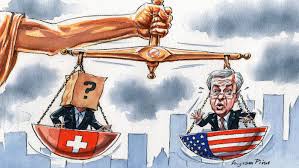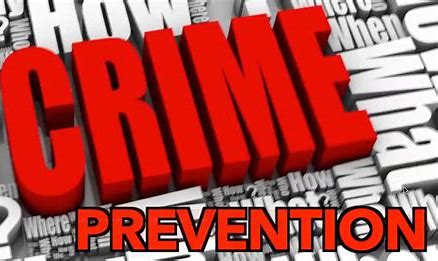Introduction

White-collar crime represents a complex and pervasive form of illicit activity that occurs within the realms of business, finance, and government. Unlike traditional street crimes, white-collar offenses typically involve deception, manipulation, and abuse of trust for financial gain. This essay aims to explore the multifaceted nature of white-collar crime in the United States, examining its various manifestations, impacts on society, and the strategies employed to combat it.
Understanding White-Collar Crime
White-collar crime encompasses a wide range of offenses committed by individuals and organizations in positions of power or authority. These crimes often involve complex schemes, financial manipulation, and exploitation of legal and regulatory loopholes. Common examples of white-collar crime include securities fraud, embezzlement, insider trading, bribery, money laundering, tax evasion, and corporate fraud.
The perpetrators of white-collar crime
may include corporate executives, financial professionals, government officials, and individuals in positions of trust within organizations. Unlike street criminals, white-collar offenders often operate within the confines of legitimate business structures, using their knowledge, authority, and access to resources to perpetrate their schemes.
Factors Contributing to White-Collar Crime Several factors contribute to the prevalence and perpetuation of white-collar crime in the USA:
- Opportunity: White-collar offenders exploit opportunities presented by their positions of trust, access to sensitive information, and control over financial resources. Weak internal controls, lax oversight, and inadequate regulatory enforcement create fertile ground for white-collar offenses to occur.
- Greed and Ambition: The pursuit of wealth, status, and power motivates individuals to engage in fraudulent and unethical behavior. Pressure to meet financial targets, earn bonuses, and maintain competitive advantages can drive individuals and organizations to cut corners, bend rules, and engage in illegal conduct.
- Complexity of Financial Systems: The complexity of modern financial systems, including global markets, digital transactions, and complex financial instruments, creates challenges for regulators and law enforcement agencies in detecting and prosecuting white-collar crime. Financial transactions conducted across borders and through opaque channels further complicate efforts to trace illicit activities.
Impacts of White-Collar Crime White-collar crime has profound and far-reaching consequences for individuals, businesses, and society as a whole. The impacts of white-collar crime include:
- Financial Losses: Victims of white-collar crime suffer significant financial losses, often totaling billions of dollars annually. Investors, shareholders, employees, consumers, and taxpayers bear the brunt of fraudulent schemes, Ponzi schemes, and corporate malfeasance.
- Erosion of Trust: White-collar crime undermines public trust in institutions, markets, and government agencies. Scandals involving corporate fraud, accounting irregularities, and regulatory failures erode confidence in the integrity of financial systems and institutions.
 3.Economic Instability: White-collar crime can contribute to economic instability and market volatility, with ripple effects throughout the economy. Financial crises triggered by corporate fraud, insider trading, and speculative bubbles can lead to job losses, business closures, and recessionary pressures.Social Inequality: White-collar crime exacerbates social inequality by enriching a privileged few at the expense of the broader population. Corporate executives, financial elites, and well-connected individuals often escape accountability for their actions, while ordinary citizens bear the burden of financial losses and economic downturns.Responses to White-Collar Crime Addressing white-collar crime requires a coordinated and multi-faceted approach that involves regulatory oversight, law enforcement efforts, and corporate accountability measures. Strategies for combating white-collar crime include:
3.Economic Instability: White-collar crime can contribute to economic instability and market volatility, with ripple effects throughout the economy. Financial crises triggered by corporate fraud, insider trading, and speculative bubbles can lead to job losses, business closures, and recessionary pressures.Social Inequality: White-collar crime exacerbates social inequality by enriching a privileged few at the expense of the broader population. Corporate executives, financial elites, and well-connected individuals often escape accountability for their actions, while ordinary citizens bear the burden of financial losses and economic downturns.Responses to White-Collar Crime Addressing white-collar crime requires a coordinated and multi-faceted approach that involves regulatory oversight, law enforcement efforts, and corporate accountability measures. Strategies for combating white-collar crime include: - Regulatory Enforcement: Strengthening regulatory oversight and enforcement mechanisms to detect, prevent, and deter white-collar offenses. Regulatory agencies such as the Securities and Exchange Commission (SEC), the Financial Industry Regulatory Authority (FINRA), and the Internal Revenue Service (IRS) play key roles in investigating and prosecuting violations of securities laws, tax regulations, and financial reporting standards.

- Criminal Prosecution: Holding white-collar offenders accountable through criminal prosecution and enforcement actions. The Department of Justice (DOJ) and state attorneys general pursue criminal charges against individuals and organizations involved in fraud, corruption, and financial crimes. High-profile cases, such as the prosecution of corporate executives and financial institutions implicated in fraud schemes, send a strong deterrent message to would-be offenders.
- Corporate Governance and Compliance: Promoting corporate governance reforms and compliance measures to enhance transparency, accountability, and ethical conduct within organizations. Corporate boards, audit committees, and compliance officers play critical roles in overseeing internal controls, risk management practices, and adherence to legal and regulatory requirements.
- Whistleblower Protections: Providing incentives and protections for whistleblowers who report fraud, misconduct, and illegal activities within organizations. Whistleblower programs administered by government agencies, such as the SEC’s Whistleblower Program and the IRS’s Whistleblower Office, offer financial rewards and confidentiality to individuals who provide credible information leading to successful enforcement actions.
- Public Awareness and Education: Raising public awareness about the risks and consequences of white-collar crime through education, outreach, and media campaigns. Financial literacy programs, consumer protection initiatives, and investor education efforts empower individuals to recognize warning signs of fraud, make informed financial decisions, and report suspicious activities to authorities.
- Types of White-Collar Crime:
- Corporate Fraud: This includes various forms of deception perpetrated by corporations or their executives for financial gain. Examples include accounting fraud, where companies manipulate financial statements to inflate revenues or conceal losses, and securities fraud, involving misleading investors or manipulating stock prices.
- Embezzlement: The misappropriation of funds or assets by individuals entrusted with their management, often occurring within businesses, government agencies, or nonprofit organizations.
- Insider Trading: The illegal buying or selling of securities based on material, non-public information about a company, typically obtained by corporate insiders such as executives, employees, or directors.
- Bribery and Corruption: Offering or accepting bribes, kickbacks, or other forms of illicit payments to influence business decisions, gain unfair advantages, or secure favorable treatment from government officials.
- Money Laundering: Concealing the origins of illegally obtained funds by transferring them through legitimate financial channels, making them appear as though they were obtained through lawful means.
- Perpetrators:

- Corporate Executives: Individuals in positions of authority within corporations or financial institutions who engage in fraudulent or unethical conduct to benefit themselves or their organizations.
-
- White-Collar Professionals: Accountants, attorneys, financial advisors, and other professionals who may misuse their expertise or positions of trust to facilitate or conceal white-collar crimes.
- Government Officials: Public servants who abuse their authority or engage in corrupt practices for personal gain or to advance their political interests.
- Organized Crime Groups: Criminal organizations may engage in sophisticated schemes involving fraud, money laundering, and other white-collar offenses to generate illicit profits.
- Enforcement and Prosecution:
- Federal Agencies: Several federal agencies are tasked with investigating and prosecuting white-collar crime, including the Federal Bureau of Investigation (FBI), the Securities and Exchange Commission (SEC), the Department of Justice (DOJ), and the Internal Revenue Service (IRS).
- State and Local Authorities: State attorneys general and local law enforcement agencies may also have jurisdiction over certain white-collar offenses, particularly those involving consumer fraud, embezzlement, or corruption at the state or municipal level.
- Task Forces and Working Groups: Interagency task forces and joint working groups bring together federal, state, and local law enforcement agencies to collaborate on complex white-collar investigations and prosecutions.
- Civil and Criminal Penalties: Perpetrators of white-collar crime may face both civil and criminal penalties, including fines, restitution, forfeiture of assets, and imprisonment. Civil enforcement actions may result in monetary sanctions or injunctive relief, while criminal prosecutions can lead to convictions and incarceration.
- Challenges and Complexity:
- Digital and Cybercrime: The proliferation of digital technology and online platforms has facilitated new forms of white-collar crime, including cyber fraud, identity theft, and data breaches.
- Globalization: White-collar crime often transcends national borders, with perpetrators exploiting differences in legal systems, regulatory regimes, and jurisdictional boundaries to evade detection and prosecution.
- Complex Financial Transactions: White-collar offenses may involve intricate financial transactions, offshore accounts, and shell companies, making them challenging to investigate and prosecute.
- Resource Constraints: Law enforcement agencies and regulatory bodies may face resource constraints, staffing shortages, and competing priorities when combating white-collar crime, leading to gaps in enforcement and oversight.
- Corporate Culture and Compliance: The corporate culture of secrecy, competitiveness, and profit maximization may incentivize or tolerate unethical behavior, hindering efforts to promote transparency, accountability, and compliance with laws and regulations.
- Prevention and Deterrence:
- Regulatory Oversight: Strengthening regulatory oversight and enforcement mechanisms to detect and deter white-collar offenses, including implementing stricter compliance requirements, conducting routine audits, and imposing sanctions for non-compliance.
- Corporate Governance: Promoting ethical leadership, transparency, and accountability within organizations through effective corporate governance practices, independent board oversight, and robust internal controls.
- Whistleblower Protections: Providing incentives and protections for whistleblowers who report misconduct or illegal activities, including confidential reporting channels, anti-retaliation measures, and financial rewards for information leading to successful enforcement actions.
- Public Awareness and Education: Raising awareness about the risks and consequences of white-collar crime through public education campaigns, media outreach, and financial literacy programs aimed at empowering individuals to recognize warning signs, protect themselves from fraud, and report suspicious activities to authorities.
By addressing the root causes of white-collar crime, strengthening enforcement efforts, and promoting ethical conduct and accountability within organizations, the USA can work towards reducing the prevalence and impact of white-collar offenses on individuals, businesses, and society as a whole. Effective collaboration between law enforcement agencies, regulatory bodies, industry stakeholders, and the public is essential to combating white-collar crime and upholding the integrity of financial systems and institution.
Conclusion
White-collar crime poses significant challenges to the integrity of financial systems, the stability of markets, and the well-being of individuals and communities. By understanding the dynamics of white-collar crime, acknowledging its impacts on society, and implementing effective strategies to combat it, the USA can work towards a more transparent, accountable, and equitable financial system. Through collaboration between government agencies, regulatory bodies, law enforcement authorities, and corporate stakeholders, we can promote ethical conduct, restore public trust, and hold perpetrators of white-collar crime accountable for their actions.



